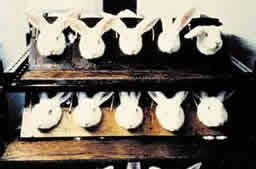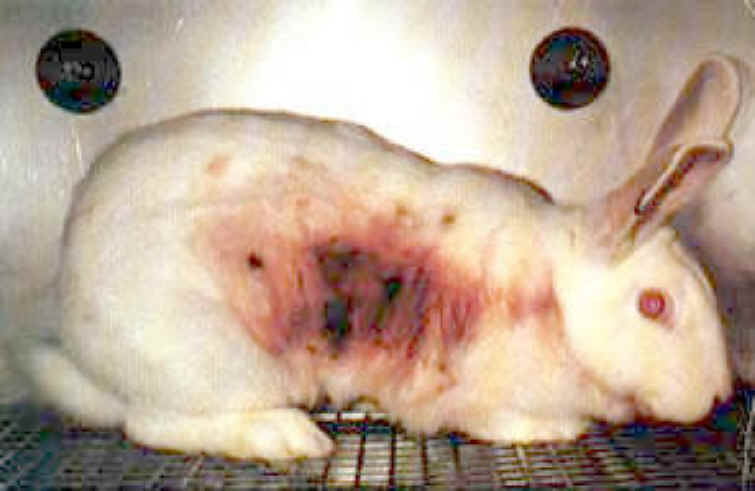Phoenician sailors visiting the coast of Spain circa 1100s BC, mistaking the European rabbit for a species from their homeland (the rock hyrax Procavia capensis Hebrew: שפן סלע shafan sela), gave it the name i-shepan-ham. A theory exists that a corruption of this name, used by the Romans, became the Latin name for Spain, Hispania – although this theory is somewhat controversial. In Rome rabbits were raised in large walled colonies.

Animal Testing - Rabbits
Selective breeding of rabbits began in the Middle Ages, when they were first treated as domesticated farm animals. By the 16th century, several new breeds of different colors and sizes were being recorded.

the abuse of test animals,
In the 19th century, as animal fancy in general began to emerge, rabbit fanciers began to sponsor rabbit exhibitions and fairs in Western Europe and the United States. Breeds were created and modified for the added purpose of exhibition, a departure from the breeds that had been created solely for food, fur, or wool. The rabbit's emergence as a household pet began during the Victorian era.

tested on animals.

test animals

or "not tested on animals

and research on animals

Animal Testing - Rabbits
Selective breeding of rabbits began in the Middle Ages, when they were first treated as domesticated farm animals. By the 16th century, several new breeds of different colors and sizes were being recorded.

the abuse of test animals,
In the 19th century, as animal fancy in general began to emerge, rabbit fanciers began to sponsor rabbit exhibitions and fairs in Western Europe and the United States. Breeds were created and modified for the added purpose of exhibition, a departure from the breeds that had been created solely for food, fur, or wool. The rabbit's emergence as a household pet began during the Victorian era.

tested on animals.

test animals

or "not tested on animals

and research on animals



